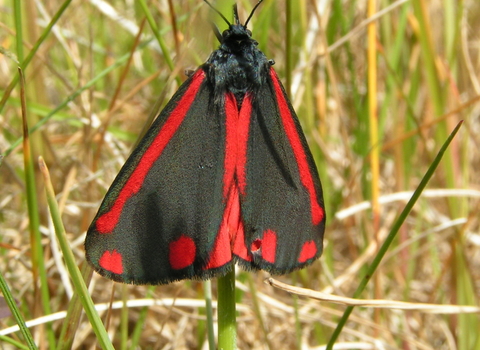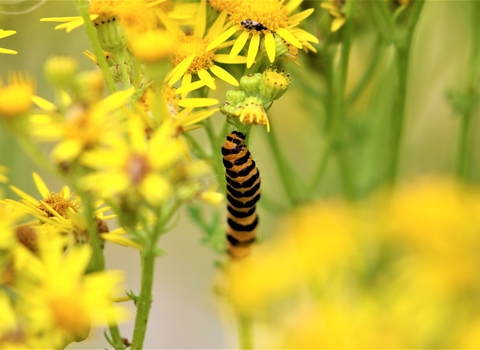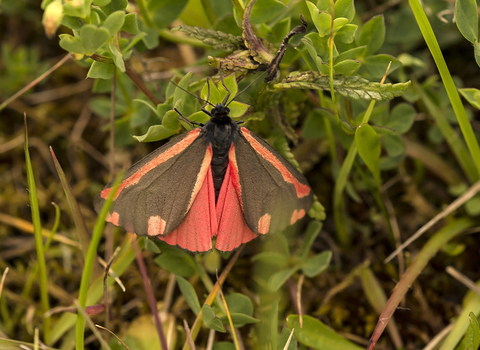
Cinnabar moth Richard Burkmar

Cinnabar moth caterpillar ©Andrew Hankinson

©Bob Coyle
Cinnabar
These pretty black and red moths are often confused for butterflies! Their black and yellow caterpillars are a common sight on ragwort plants. The caterpillar’s bright colours warn predators not to eat them, giving a strong signal that they are poisonous!
Scientific name
Tyria jacobaeaeWhen to see
May to AugustSpecies information
Category
Statistics
Wingspan: 3.4-4.6cmPriority Species under the UK Post-2010 Biodiversity Framework.
